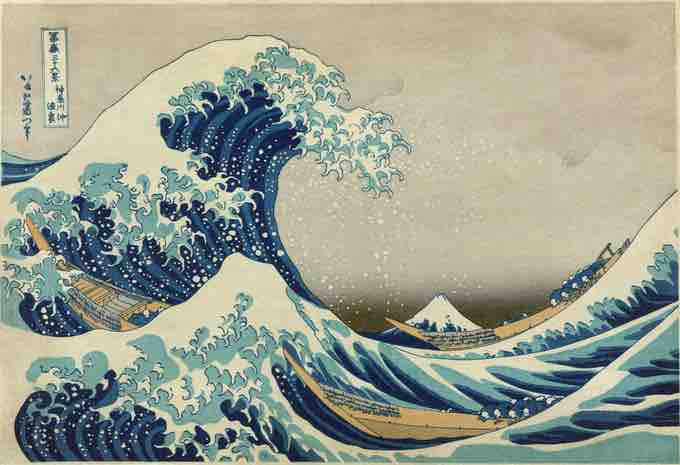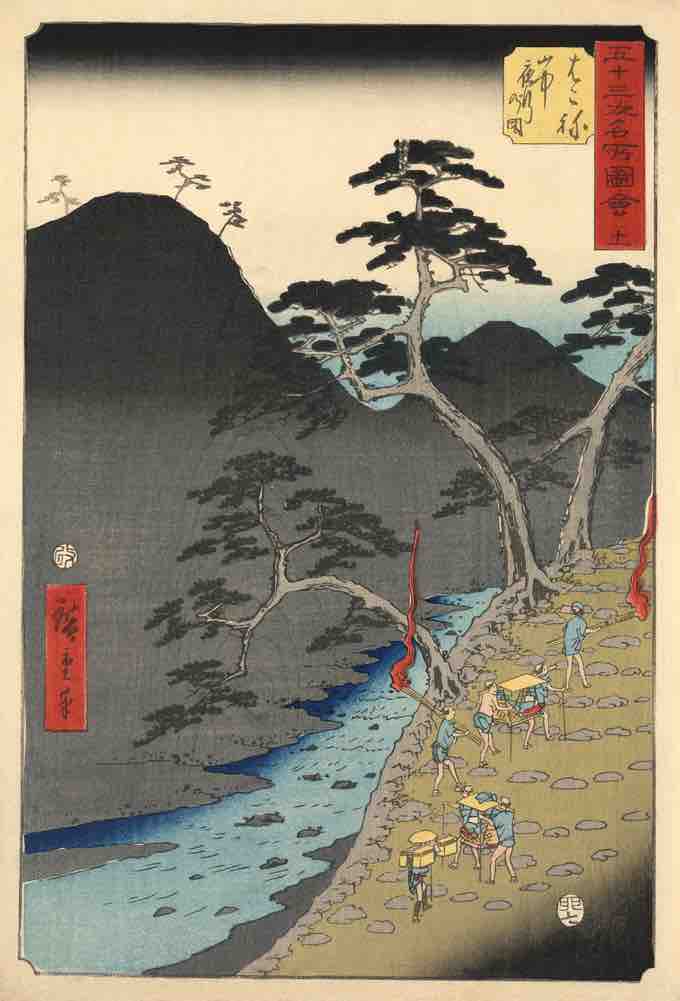Overview
With the rise of popular culture in the Edo period, a style of woodblock prints called ukiyo-e became a major art form. Its techniques were fine tuned to produce colorful prints of everything from daily news to schoolbooks. Subject matter ranged from Kabuki actors and courtesans to famous landscapes. By 1800, ukiyo-e flourished alongside Rinpa and literati painting.
The school of art best known in the West is that of the ukiyo-e paintings and woodblock prints of the demimonde—the world of the kabuki theater and the brothel district. Ukiyo-e prints began to be produced in the late 17th century, and required a highly involved process which included a designer, engraver, printer, and publisher. Suzuki Harunobu produced the first polychrome (multicolor) print in 1764, and print designers of the next generation, including Torii Kiyonaga and Utamaro, created elegant and sometimes insightful depictions of courtesans.
Notable Artists
The best known work of ukiyo-e from the Edo period is the woodblock print series. Thirty-six Views of Mount Fuji (富 Fugaku Sanjūroku-kei, c. 1831), which includes the internationally recognized print The Great Wave off Kanagawa, was created during the 1820s by Katsushika Hokusai (1760-1849). Hokusai was influenced by such painters as Sesshu and other styles of Chinese painting. While Hokusai's work prior to this series is certainly important, it was not until this series that he gained broad recognition. It was also The Great Wave print that initially received, and continues to receive, acclaim and popularity in the Western world.

"The Great Wave off Kanagawa," Hokusai's most famous print, the first in the series 36 Views of Mount Fuji
Although it is often used in tsunami literature, there is no reason to suspect that Hokusai intended it to be interpreted in that way. The waves in this work are sometimes mistakenly referred to as tsunami (津), but they are more accurately called okinami (沖), great off-shore waves.
The dominant artistic figure of the 19th century was Hokusai's contemporary, Hiroshige, a creator of romantic and somewhat sentimental landscape prints. The odd angles and shapes through which Hiroshige often viewed landscapes, with his emphasis on flat planes and strong linear outlines, had a profound impact on such Western artists as Edgar Degas and Vincent van Gogh. Through artworks held in Western museums, these same printmakers would later exert a powerful influence on the imagery and aesthetic approaches used by early Modernist poets like Ezra Pound and Richard Aldington.

Hiroshige's Upright Tōkaidō depicts Hakone.
This print shows travelers and porters crossing a steep pass in the mountains at the Hakone station on the Tōkaidō Road.
Ukiyo-e was closely linked to the bunjinga, or literati, style of painting that emerged during the same period. Just as ukiyo-e artists chose to depict figures from life outside of the strictures of the Tokugawa shogunate, bunjinga artists turned to Chinese culture and based their paintings on those of Chinese scholar-painters. The exemplars of this style include Ike no Taiga, Yosa Buson, Tanomura Chikuden, and Yamamoto Baiitsu.